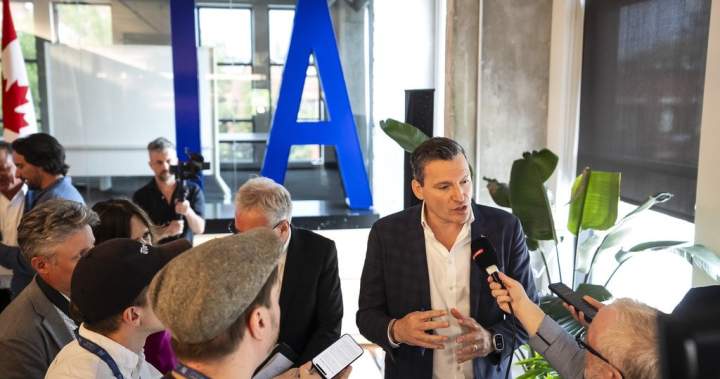The federal government says it plans to launch a public registry to keep Canadians in the loop on its growing use of artificial intelligence.
“We are seeing a lot more activity across departments and agencies,” Stephen Burt, the government’s chief data officer, told The Canadian Press.
The registry will also help the government itself keep track of AI projects that are underway. Kara Beckles, executive director of privacy and responsible data at the Treasury Board, said that while AI platforms are being used in many ways across government, there is no “full and complete list.”
Beckles said that over the past few years, “departments have really started experimenting more and more with implementing AI in different ways.”
She cited Fisheries and Oceans Canada using AI to help find lost fishing gear, Agriculture Canada processing satellite data to help predict crop yields, and Transport Canada using AI to screen high-risk air cargo.
But these initiatives have been piecemeal and individual departments have been launching their own projects. The public service is now working on a more co-ordinated approach under an AI strategy launched earlier this year.
Prime Minister Mark Carney campaigned in the spring federal election on using AI to make the public service more efficient, while Finance Minister François-Philippe Champagne has asked his colleagues to identify cuts to program spending of 15 per cent by 2028-29.
Get daily National news
Get the day’s top news, political, economic, and current affairs headlines, delivered to your inbox once a day.
In August, the federal government signed an agreement with Canadian artificial intelligence company Cohere to identify places where AI could enhance public service operations.
Burt said AI will be an important tool for making the government more efficient, but it’s not the only one.
“We are still plumbing the extent to which artificial intelligence as a specific technology is going to deliver specific savings and efficiencies,” he said.
The AI strategy notes that during consultations, the government heard from departments about the need for a central hub to support projects and share knowledge.
Through an initial project to test that central hub approach, the Treasury Board worked with the Translation Bureau to come up with an automated translation system for low-risk and low-value documents.
Burt said that tool is now available across Public Services and Procurement Canada and “is shortly going to be rolling out in a staged fashion across other departments and agencies.”
Beckles said the AI hub is meant to identify current uses of artificial intelligence that can be scaled up to operate across government. She said the translation tool was an appealing option because “all public servants need access to translation services at some time or another.”
Part of the idea behind the hub is to avoid duplication, Beckles said.
“We don’t want five different departments working on the same type of tool all at the same time,” she said.
“We want to be able to consolidate those efforts and make sure that we’re building something once and then deploying it across the system.”
It will make for a more “mature” approach as AI use grows, Beckles said.
“We’re not dealing with a handful of projects across the system anymore,” she said. “Instead, it’s a handful of projects in every department, or at least all of the medium and larger size ones.”
The government’s AI strategy also acknowledged the need for transparency and pledged to prioritize establishing a public registry of AI systems.
Experts have previously attempted to collect data on the extent of AI use in the public service. Joanna Redden, an associate professor at Western University, pieced together a database launched last year that showed hundreds of cases of AI use within the federal government.
A ministerial briefing document prepared earlier this year by Shared Services Canada and released last month also outlined some ways AI is being used by government.
It lists an in-house alternative to tools like ChatGPT that can help employees at Shared Services Canada with tasks like writing emails or summarizing information. The document said it operates “within a controlled environment that ensures appropriate security and data integrity.”
Other examples cited in the document include Canadian Heritage using “automation and generative AI to refine the ministerial correspondence process,” and the Canada Revenue Agency allowing Canadians to access their accounts using a smartphone, government-issued ID and facial recognition technology.
It also said the Finance Department developed a tool “that automates the collection and processing of tariff consultations, summarizes industry data and drafts initial responses for analysts and stakeholders.”
Burt said the registry is still under development, and Beckles added there is no timeline yet for its launch.
Part of the work on the registry involves deciding which information will be included.
“We don’t want to capture every time an analyst uses Copilot to help write an email, but we do want to capture all the projects and systems that have AI embedded in them,” Beckles said.
Beckles said the idea is to “make sure that it’s built for transparency for the public, but also internally, so that we can use that full and complete list for our own purposes as well.”
© 2025 The Canadian Press
Federal government planning public registry for its new AI projects


